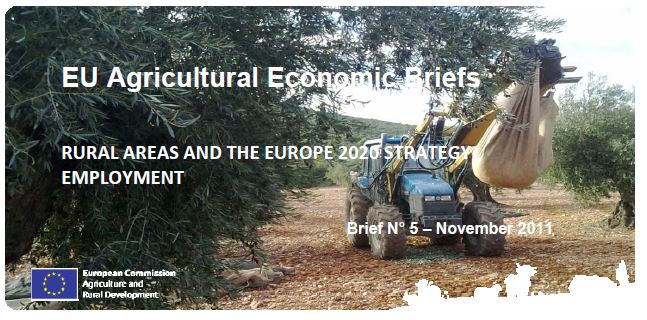EU Agricultural Economic Briefs-RURAL AREAS AND THE EUROPE 2020 STRATEGY: EMPLOYMENT
Employment is a key element of the EU's Europe 2020 strategy for smart, sustainable and inclusive growth. Increasing the rate of employment can help to reduce poverty and thereby improve economic, social and territorial cohesion. Reaching an employment rate of 75% of the population aged 20-64 is one of the five headline targets to be achieved over the coming decade, including through the greater involvement of women, older, low skilled workers and the better integration of migrants in the work force. Reaching this target will not be an easy task. Only two-thirds of the working age population is currently employed, compared to over 70% in the US and Japan. The employment rates of women and older workers are particularly low. Young people have been severely hit by the crisis, with an unemployment rate over 21%. Re-integration into the labour market will become more difficult the longer a person has been unemployed. Rural areas are crucial for the attainment of the Europe 2020 headline target. Predominantly rural regions1 generate 22% of the total employment in the EU (17% in the EU-15 and 37% in the EU-12), but the employment rate in predominantly rural areas is lower than in other types of regions, especially among women, older and low-skilled workers. This economic brief examines the latest statistics on employment in the EU, focussing on predominantly rural areas and the degree to which they achieve the target of the Europe 2020 strategy. It also analyses the rural employment rate by gender, age and the highest level of educational attainment.
